Flag of India
State emblem of India
(coat of arms adopted 26 January 1950)
Introduction of India
India (Urdu: انڈیا) officially the Republic of India (ISO: Bhārat Gaṇarājya), is a country in South Asia. It is the seventh-largest country by area; the most populous country as of June 2023; and from the time of its independence in 15 Agust 1947, the world's most populous democracy.
The founder of India was Ghandi .
India has world's strong standing armed forces. It is a declared nuclear-weapons state, in 13 may 1998. A nuclear scientist Dr
Avul Pakir Jainulabdeen Abdul Kalam known as the Father of Indian atomic bomb.
India is ranked among the emerging and growth-leading economies, nation.
Legislative body of India
Legislature of the Union, which is called Parliament, consists of the President and two Houses, known as Council of States (Rajya Sabha) and House of the People (Lok Sabha). Each House has to meet within six months of its previous sitting. A joint sitting of two Houses can be held in certain cases.
Members are elected for 5 years through electoral process.
Parliament of India or Bharatiya Sansad
State heads
The prime minister of India (Urdu: وزِیراعظم انڈیا) is the head of government of the Republic of India. Executive authority is vested in the prime minister and his chosen cabinet, despite the president of India serving as the nominal head of executive.
Supreme court of India
The Supreme Court of India (Hindi: भारत का उच्चतम न्यायालय, IAST: Bhārat kā Uccatam Nyāyālay) is the supreme judicial authority and the highest court of the Republic of India. It is the final court of appeal for all civil and criminal cases in India. It also has the power of judicial review. The Supreme Court, which consists of the Chief Justice of India and a maximum of fellow 33 judges, has extensive powers in the form of original, appellate and advisory jurisdictions.
Supreme Court of India
Emblem of the Supreme Court of India
Capital of India
New Delhi is the capital of India.
Largest city
Delhi is the most populous and metro politian city in India with a population of over 30 million, followed by Mumbai with a population of over 20 million,
While Mumbai is largest city of India and finical centre.
Currancy of India
Currancy of India is Indian Rupee (₹) (INR).
Country codes
Caling code +91
Internet TLD (Top Level Domain) .in
Iso code 3166 IN
ISO 3166 is a standard published by the International Organization for Standardization (ISO) that defines codes for the names of countries, dependent territories, special areas of geographical interest, and their principal subdivisions (e.g., provinces or states).
National Language of India
National Language of India is Hindi ( ہندی ) but most of official work done in English instead of Hindi.
Other ethnic languages are spoken in state level included in Eihgth schedule of Constitution of india,s list the official languages are approximately 22 at state level like Assamese, Bengali, Boro, Dogri, Gujarati, Hindi, Kannada, Kashmiri, Konkani, Maithili, Malayalam, Manipuri, Marathi, Nepali, Odia, Punjabi, Sanskrit, Santali, Sindhi, Tamil, Telugu, Urdu, Kokboro, kLepcha, Mizo, Sikkimese, all the 8th scheduled languages recognise regional languages, (except Sindhi, Kashmiri and Dogri).
Out of these 447 native languages are spoken all over the India.
Time zone
UTC+05:30 (IST)
Coordinated Universal Time or UTC is the primary time standard by which the world regulates clocks and time.
IST stand for Indian Standard Time.
DST (Day Saving Time) is not observed.
Day Saving Time is the time in which any country, changes its time officially in any season and revert back in same season again process is repeated through out.
Date format
dd.mm.y.y.y.y
Driving side
Left drive
Travel facilities
Transporter vechiels are available in whole India, trains and domestic air lines are available for some major cities. And boats are available for some water lock areas.
GDP year 2023
Gross Domestic products of the year 2023 is 3.737 US trillion dollars, (5th) in the world.
GDP Per capita $2,601, (139th) in the world.
GDP per capita is often considered an indicator of a country's standard of living; however, this is inaccurate because GDP per capita is not a measure of personal income.
Relegion
79.8 % Hinduism
14.2 % islam
2.3 % christainty
1.7 % Sikhism
0.7 % Buddhism
0.4 % Jainism
0.23 % Unaffiliated
0.65 % others
Population of India
It is the world's 1st-most populous country, with a population of almost 1.42 billion people, according to census 2023 and most populous country in the world with one-sixth of the world,s population.
Map of India
Total Area
3,287,263 km square (1,269,219 square miles) 7th largest country in the world and the total land area as 3,060,500 km2 (1,181,700 sq miles)
Water percentage is 9.6 % .
Area and boundaries of India
India is the 7th-largest country in the world by area and the 3rd-largest in Asia, spanning 3,287,263 square kilometers (1,269,219 square miles).
India is bounded by the Indian Ocean on the south, the Arabian Sea on the southwest, and the Bay of Bengal on the southeast, it shares land borders with Pakistan to the west; China, Nepal, and Bhutan to the north; and Bangladesh and Myanmar to the east. In the Indian Ocean, India is in the vicinity of Sri Lanka and the Maldives; its Andaman and Nicobar Islands share a maritime border with Thailand, Myanmar, and Indonesia.
New Delhi is the nation's capital, while Mumbai is its largest city and financial center.
Cultural civilization and Heritage
India is the site of several ancient cultures, including the 8,500-year-old it is supposed that Modern humans arrived on the Indian subcontinent from Africa no later than 55,000 years ago. Their long occupation, initially in varying forms of isolation as hunter-gatherers, has made the region highly diverse, second only to Africa in human genetic diversity. Settled life emerged on the subcontinent in the western margins of the Indus river basin 9,000 years ago, evolving gradually into the Indus Valley Civilisation of the third millennium BCE. By 1200 BCE, an archaic form of Sanskrit, an Indo-European language, had diffused into India from the northwest. Its evidence today is found in the hymns of the Rigveda. Preserved by an oral tradition that was resolutely vigilant, the Rigveda records the dawning of Hinduism in India. The Dravidian languages of India were supplanted in the northern and western regions. By 400 BCE, stratification and exclusion by caste had emerged within Hinduism, and Buddhism and Jainism had arisen, proclaiming social orders unlinked to heredity. Early political consolidations gave rise to the loose-knit Maurya and Gupta Empires based in the Ganges Basin. Their collective era was suffused with wide-ranging creativity, but also marked by the declining status of women, and the incorporation of untouchability into an organised system of belief. In South India, the Middle kingdoms exported Dravidian-languages scripts and religious cultures to the kingdoms of Southeast Asia.
Indus Valley civilization of the Bronze Age, the most extensive of the civilizations of Afro-Eurasia, and the ancient Gandhara civilization.
The regions that comprise the modern state of India were the realm of multiple empires and dynasties, including the Achaemenid, the Maurya, the Kushan, the Gupta; the Umayyad Caliphate in its southern regions, the Samma, the Hindu Shahis, the Shah Miris, the Ghaznavids, the Delhi Sultanate, the Mughals, and most recently, the British Raj from 1858 to 1947.
Thats why rich in hertage and culture.
Gateway of India
Taj Mahal India
National of India
National symbols of India
Indian -state owned is known as National of India. Some important are given below.
- The national flag of India, colloquially called Tiraṅgā, is a horizontal rectangular tricolour flag, the colours being of India saffron, white and India green; with the Ashoka Chakra, a 24-spoke wheel, in navy blue at its centre.
- National language of India is Hindi.
- The State emblem is an adaptation from the Sarnath Lion Capital of Ashoka. In the original, there are four lions, standing back to back, mounted on an abacus with a frieze carrying sculptures in high relief of an elephant, a galloping horse, a bull and a lion separated by intervening wheels over a bell-shaped lotus. Carved out of a single block of polished sandstone, the capital is crowned by the Wheel of the Law (Dharma Chakra).
- National currency of india is Indian Rupees.
- National motive of India "Satyameva Jayate" Sanskrit: "सत्यमेव जयते "("Truth Alone Triumphs")
- National independence day of india 15 Agust 1947.
- National Republic day of india is the day when India marks and celebrates the date on which the Constitution of India came into effect on 26 January 1950.
- National hero of India is Ghandi.
- Gandhi Jayanti is an event celebrated in India to mark the birthday of Mahatma Gandhi. It is celebrated annually on 2 October.
- National calendar of India is Saka calendar.
- National Anthem Jana Gana Mana.
- National song Vande Mataram.
- Oath of Allegiance national Pledge.
- The Indian honours system is the system of awards given to individuals for a variety of services to the Republic of India. The categories of awards are as follows:
Indian civil awards
Bharat Ratna- 1st degree of honour
Padma Vibhushan- 2nd degree of honour
Padma Bhushan- 3rd degree of honour
Padma Shri- 4th degree of honour
- Indian Military awards (Gallantry Awards) are divided below in different categories.
Wartime gallantry awards
Established on 26 January 1950 with retrospective effect from 15 August 1947.
Param Vir Chakra
Mahavir ChakraVir Chakra
Peacetime gallantry awards
Ashoka Chakra
Kirti Chakra
Shaurya Chakra
These awards were instituted on 4 January 1952. These awards were renamed on 27 January 1967 as Ashoka Chakra, Kirti Chakra and Shaurya Chakra from Ashoka Chakra (Class I), Ashoka Chakra (Class II) and Ashoka Chakra (Class III) respectively.
Wartime/peacetime service awards
Sena Medal (Army) Nau Sena Medal (Navy).
Vayu Sena Medal (Air Force)
Wartime distinguished awards Sarvottam Yudh Seva Medal
Uttam Yudh Seva Medal
Yudh Seva Medal
Peacetime distinguished awards Param Vishisht Seva Medal
Ati Vishisht Seva Medal
Vishisht Seva Medal
They were established on January 26, 1960
The first 3 awards in the main Gallantary awards category that came into existence after independence are- Param Vir Chakra, Maha Vir Chakra, Vir Chakra.These awards are conferred twice a year- on Republic Day and Independence Day.The other 3 gallantry awards were introduced in 1952- Ashok Chakra Class I, Ashok Chakra Class II, Ashok Chakra Class III. Later, they were named as Ashok Chakra, Kirti Chakra and Shaurya Chakra.The gallantry Awards have a certain selection process for the recipients.
- National mausoleum of India is An immense mausoleum of white marble, built in Agra between 1631 and 1648 by order of the Mughal emperor Shah Jahan in memory of his favourite wife, the Taj Mahal is the jewel of Muslim art in India and one of the universally admired masterpieces of the world's heritage.
- India don’t have a singular national poet but we do award certain exceptional people as Rashtriya Kavi aka Poet of India. However, the first person that comes to mind is Rabindranath Tagore who wrote the national anthem ( Jana Gana mana )
- Father of atomic bomb scientist of India is Dr. Abdul Salaam.
- National dress of India is Dhoti, and saari is the national dress of India.
- National colure of india is not specified, but mostly orange is use.
- Jama Masjid of Delhi most probably known as national mosque, Jama Masjid also spelled Jāmiʿ Masjid, Jama Masjid of Delhi also called Masjid-i Jahān Numā, mosque in Old Delhi, India.
- National mountain of India is Kamchenjunga height is 8586. meter.
- National River of India is Ganga river.
- National aquatc animal of India is Ganges River Dolphin.
- National sport of India is Hockey.
- National flower of India is Lotus.
- National animal of India is Royal Bengal Tiger.
- National heritage animal Indian Elephant.
- National bird is Indian Peacock (Moore).
- National reptile of India is king Cobra snake.
- National library of India is the National library Kolkata.
- National Fruit of India is Mango.
- National vegetable of India is Pumpkin.
- National tree India Banyan tree.
- National drink of India is Tea (chai) .
- National food of Indian is Khichdi.
- Doordarshan (abbreviated as DD; lit. 'distant vision, television') is an Indian public service broadcaster founded by the Government of India, owned by the Ministry of Information and Broadcasting and one of Prasar Bharati's two divisions.
- All india Radio or Akashvani (literary meaning "Voice from the Sky"), also known as All India Radio (AIR), is the national public radio broadcaster of India and is a division of Prasar Bharati. It was established in 1936. It is the sister service of Prasar Bharati's Doordarshan, an Indian television broadcaster.
- Indian National telecommunication is TCIL, a prime engineering and consultancy company, is a wholly owned Government of India Public Sector Enterprise under the administrative control of the Department of Telecommunications (DOT), Ministry of Communications, Government of India. TCIL was set up in 1978 for providing Indian telecom expertise in all fields of telecom, Civil and IT to developing countries around the world.
- National steel mill of india is indian steel mill works under the ministry of steel india.
- Indian National Railway is known as Indian Railways (IR) is a statutory body under the ownership of the Ministry of Railways, Government of India that operates India's national railway system. It manages the fourth largest national railway system in the world by size, with a total route length of 68,043 km (42,280 mi), running track length of 102,831 km (63,896 mi) and track length of 128,305 km (79,725 mi) as of 31 March 2022, and 58,812 km (36,544 mi) of all the gauge routes are electrified with 25 kV 50 Hz AC electric traction as of 1 April 2023.
- Rail Bhawan is the headquarters of the Indian Railways. It is located at Raisina Road, New Delhi, near the Sansad Bhavan (Parliament House).
- Indian Railways (reporting mark) (Urdu: انڈین رلویز) is In Indian, wagons owned by the Indian Railways are marked with codes of two to four letters, these codes normally being the initials of the railway divisions concerned along with the Hindi abbreviation; for example, trains of the Western Railway zone are marked "WR" and "प रे"; those of the Central Railway zone are marked "CR" and "मध्य", etc. The codes are agreed between the railways and registered with the Ministry of Railways, Government of India.
- National Air line of India is Air India (AI) is the flag carrier airline of India, headquartered at New Delhi.
- India Post is a government-operated postal system in India, and is the trade name of the Department of Post under the Ministry of Communications. Generally known as the Post Office, it is the most widely distributed postal system in the world. Warren Hastings had taken initiative under East India Company to start the Postal Service in the country in 1766. It was initially established under the name "Company Mail". It was later modified into a service under the Crown in 1854 by Lord Dalhousie. Dalhousie introduced uniform postage rates (universal service) and helped to pass the India Post Office Act 1854 which significantly improved upon 1837 Post Office act which had introduced regular post offices in India. It created the position Director General of Post for the whole country.








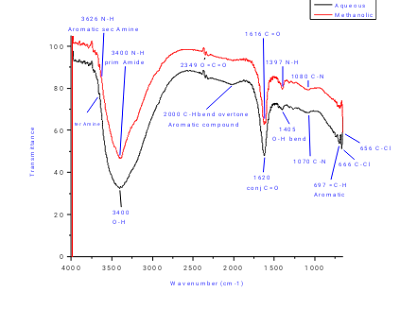
.jpeg)


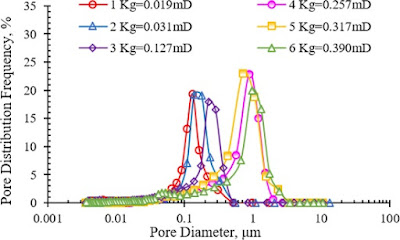


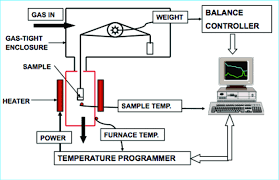
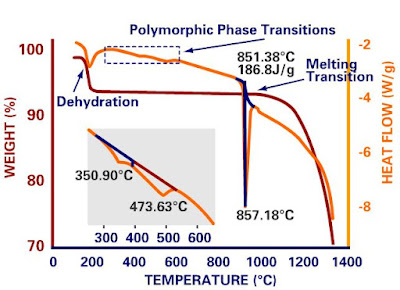





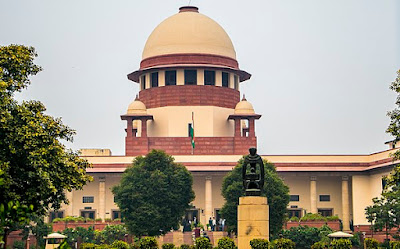
.png)
.jpeg)
.jpeg)

.png)



-01.jpeg)
.jpeg)